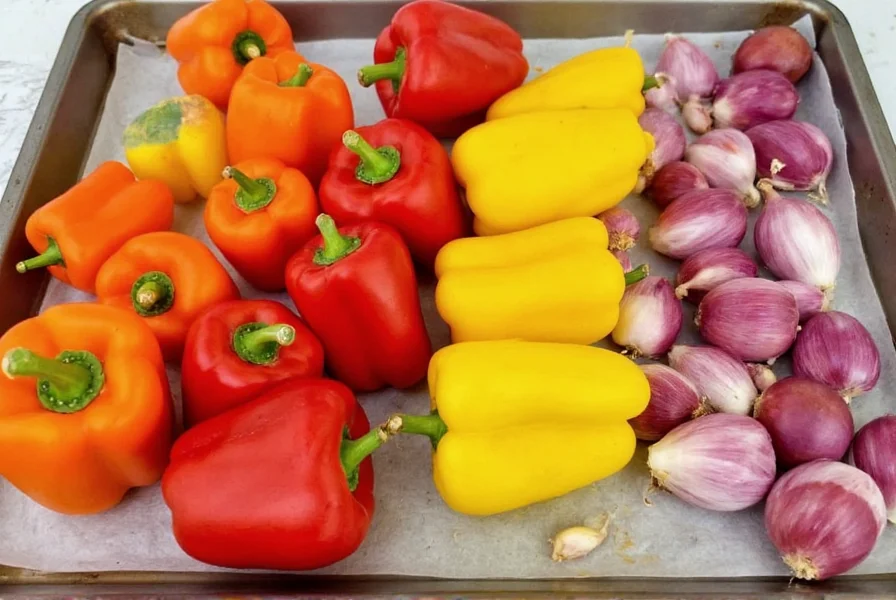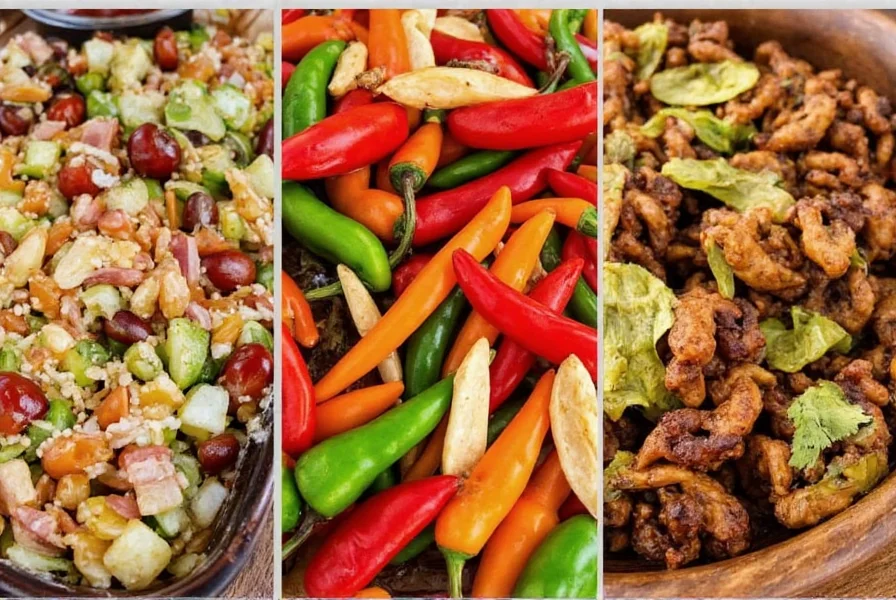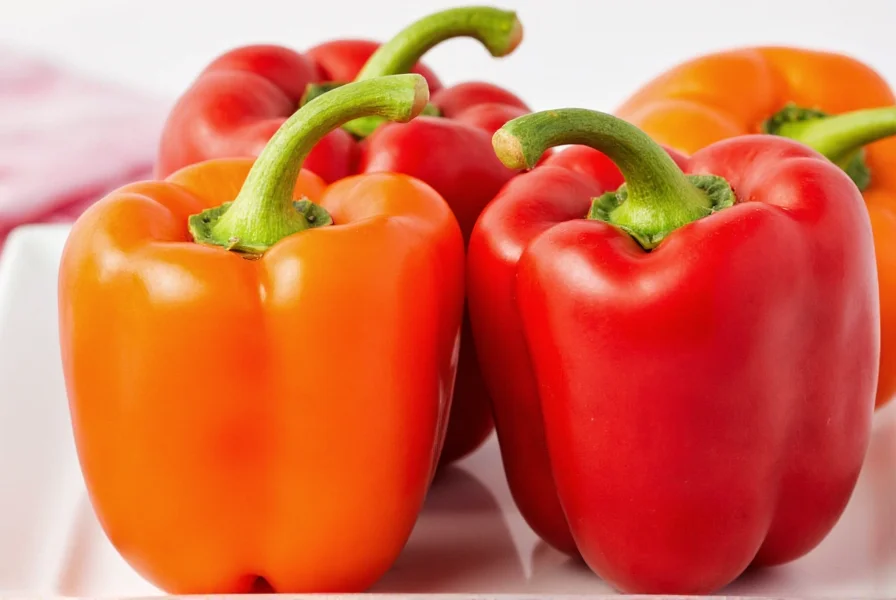The Ultimate Guide to Perfect Pepper Recipes
Peppers transform ordinary meals into vibrant culinary experiences. Whether you're working with sweet bell peppers, spicy jalapeños, or aromatic black peppercorns, understanding how to maximize their flavor potential is essential for home cooks. This guide provides not just one recipe, but a complete framework for creating delicious pepper-based dishes that suit any palate or dietary requirement.
Understanding Pepper Varieties and Their Best Uses
Not all peppers serve the same purpose in cooking. Selecting the right variety makes the difference between a mediocre dish and an exceptional one. The following table outlines common pepper types and their ideal culinary applications:
| Pepper Type | Heat Level (Scoville) | Best Cooking Methods | Flavor Profile |
|---|---|---|---|
| Bell Peppers (all colors) | 0 SHU | Roasting, stuffing, stir-frying | Sweet, grassy, vegetal |
| Jalapeño | 2,500-8,000 SHU | Blending, pickling, stuffing | Grassy, bright, medium heat |
| Serrano | 10,000-23,000 SHU | Salsas, sauces, garnishes | Sharp, acidic, intense heat |
| Black Peppercorns | N/A | Finishing, grinding, infusing | Pungent, woody, complex |
Classic Roasted Pepper and Vegetable Medley
This foundational pepper recipe works as a side dish, topping for proteins, or base for more complex meals. The roasting process intensifies the natural sweetness of peppers while creating delicious caramelized edges.

Ingredients
- 3 mixed color bell peppers (red, yellow, orange), seeded and cut into 1-inch strips
- 1 large red onion, sliced
- 4 cloves garlic, peeled
- 2 tablespoons extra virgin olive oil
- 1 teaspoon dried oregano
- 1/2 teaspoon smoked paprika
- Salt and freshly ground black pepper to taste
- 1 tablespoon balsamic vinegar (optional)
Step-by-Step Preparation
- Preheat oven to 425°F (220°C) and line a baking sheet with parchment paper
- In a large bowl, combine peppers, onions, and garlic with olive oil, oregano, and smoked paprika
- Spread vegetables in a single layer on the baking sheet, ensuring pieces aren't crowded
- Roast for 20-25 minutes, flipping once halfway through, until edges are caramelized
- Remove from oven and immediately sprinkle with salt, black pepper, and balsamic vinegar
- Toss gently and serve warm or at room temperature
Pro Tips for Perfect Pepper Dishes Every Time
Professional chefs know specific techniques that elevate simple pepper recipes. First, always remove the white pith from bell peppers as it contains bitter compounds. Second, when working with hot peppers, wear gloves to prevent skin irritation. Third, for maximum flavor extraction, add black pepper toward the end of cooking rather than at the beginning.
Storage is another critical factor. Roasted peppers maintain their best flavor when stored in olive oil in airtight containers for up to one week. For longer preservation, freeze roasted peppers in single-serving portions for quick meal additions throughout the year. This practical approach to pepper storage solutions ensures you always have flavorful ingredients ready.
Variations for Different Diets and Preferences
The beauty of this versatile pepper recipe lies in its adaptability. For vegetarian pepper entrees, add chickpeas during the last 5 minutes of roasting. Those following low-carb pepper recipes can serve the roasted vegetables over cauliflower rice. For spicy pepper stir fry enthusiasts, incorporate sliced serrano peppers and a splash of soy sauce during the final minutes of cooking.
International variations expand this recipe's appeal significantly. For Mediterranean flair, add kalamata olives and feta cheese after roasting. Mexican-inspired versions benefit from cilantro and lime juice. Asian adaptations shine with ginger, sesame oil, and a touch of fish sauce. These global pepper recipe variations demonstrate how one basic technique can span culinary traditions.

Common Mistakes to Avoid in Pepper Cooking
Many home cooks make preventable errors when preparing pepper recipes. Overcrowding the baking sheet creates steam instead of caramelization. Using pre-cut store peppers often means sacrificing freshness and flavor. Adding salt too early can draw out moisture and prevent proper roasting. Understanding these pitfalls helps create consistently excellent easy pepper side dishes that impress.
For those exploring pepper recipes for beginners, start with bell peppers before progressing to hotter varieties. The natural sweetness provides margin for error while you develop your palate. Remember that cooking time varies significantly based on pepper thickness and oven calibration, so visual cues matter more than strict timing.
Frequently Asked Questions
What's the best way to remove seeds from bell peppers efficiently?
Stand the pepper upright on its stem end, then slice downward along the natural seams where the ribs connect. This technique separates the pepper into flat panels that make seed removal effortless. Use a small paring knife to scrape away any remaining seeds and white pith from the inside of each panel.
Can I use frozen peppers in recipes instead of fresh?
Frozen peppers work well in cooked dishes like stir-fries, soups, and casseroles but don't maintain the crisp texture needed for salads or raw applications. Thaw frozen peppers completely and pat them dry before cooking to prevent excess moisture. For best results in roasted pepper recipes, use fresh peppers as freezing alters their cellular structure.
How do I reduce the heat level in spicy pepper recipes?
Remove all seeds and white membranes from hot peppers, as these contain most of the capsaicin. Soaking sliced peppers in salted water for 15-20 minutes draws out additional heat. When creating mild pepper recipes for kids, balance heat with sweet elements like honey, maple syrup, or fruit. Dairy products like yogurt or sour cream also neutralize spiciness when served alongside.
What's the difference between using black pepper versus crushed red pepper flakes?
Black pepper comes from dried peppercorns and offers complex woody, floral notes with moderate heat. Red pepper flakes derive from dried chili peppers and provide straightforward heat with minimal complexity. Black pepper works best as a finishing spice added at the end of cooking, while red pepper flakes can withstand longer cooking times. Understanding this distinction improves results in any pepper-based seasoning technique.
How can I tell when peppers are perfectly roasted?
Perfectly roasted peppers show deep caramelization on edges while maintaining some structural integrity. The skins should blister slightly, and the vegetables should yield gently when pierced with a fork but not collapse completely. For ideal roasted pepper texture, remove them from heat when they're about 80% done, as they'll continue cooking from residual heat. Over-roasted peppers become mushy and lose their vibrant color.











 浙公网安备
33010002000092号
浙公网安备
33010002000092号 浙B2-20120091-4
浙B2-20120091-4